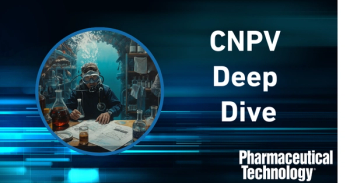
FDA's Gottlieb Hits Innovators, Insurers for Blocking Biosimilar Uptake
The FDA commissioner outlined the agency's initiatives to reward innovation and biosimilars development.
“Pernicious” rebating and contracting schemes and “Kabuki drug-pricing constructs” expose consumers to high out-of-pocket costs for biosimilars and actively discourage competition from these more affordable alternatives, says FDA Commissioner Scott Gottlieb. As part of FDA initiatives to reward innovation and promote patient access to medicines, the agency is working hard to support the development of high-quality biosimilars and interchangeable products, he explained at a policy conference sponsored by America’s Health Insurance Plans (AHIP) in Washington, DC on March 7, 2018. But high rebates paid by brand manufacturers to health plans and pharmacy benefit managers (PBMs) make it hard for biosimilars to compete. And Gottlieb feels that this reduces incentives for a biosimilar maker to make the investment needed to develop lower-cost biologics.
FDA has approved nine biosimilars, but only three are on the market due to a range of obstacles. Manufacturing and testing biosimilars currently costs from $100 million to $250 million per program, much more than the $10 million involved in developing a generic version of a small-molecule drug. Consequently, biosimilars come to market at prices only 15–20% below the innovator, which often is not a big enough difference to drive reimbursement and prescribing.
The crux of the problem is the “rebate trap,” Gottlieb explained. This permits PBMs and insurers to “profit from the spread between Wholesale Acquisition Cost (WAC) and the actual rebated price” for an innovator therapy. Rebates can amount to hundreds of millions of dollars in annual revenues for PBMs and insurers, and typically are tied by manufacturers to volume or preferred formulary status. Such strategies make it costly for plans to shift patients from an established drug to a biosimilar without losing substantial rebate payments.
Competitive health plans often use rebates to lower premiums in order to compete in the market, and not to offset beneficiary co-pays, Gottlieb added. So, the recent decision by United Healthcare to pass along full drug rebates to more than seven million people in its fully insured plans drew praise from the commissioner as a move that could help more patients afford needed medicines.
As biologics account for an increasingly large portion of drug outlays, Gottlieb urged payers and insurers to reject rebate arrangements that can discourage biosimilar development. Plans can further encourage biosimilar use by lifting prior authorization requirements for biosimilars, designing formularies with biosimilars the default option for newly diagnosed patients, and waiving co-insurance on these products.
FDA plan
To support biosimilar development, FDA seeks to provide greater scientific and regulatory clarity for sponsors, a more efficient review process, and tools for using modern analytical techniques. The agency is evaluating how smaller, targeted clinical trials may help bring biosimilars to market in a more cost-effective and timely manner and other strategies that will be spelled out in a new Biosimilar Access Plan.
FDA also will offer more education for clinicians and patients on the safety and efficacy of biosimilars to address concerns or misconceptions that foster reluctance to prescribe and use these therapies. And it will do more to lay out an efficient path for biosimilars to demonstrate interchangeability with brands.
A global market for biosimilars will create efficiencies, Gottlieb noted, and FDA is working with regulatory authorities in Europe, Japan, and Canada to harmonize R&D requirements and share experiences in overseeing biosimilars.
These efforts appear to be paying off, with 60 biosimilars for 27 different reference products enrolled in FDA’s Biosimilar Development Program. Another sign of progress is that biosimilar competitors to Neupogen have captured nearly 50% of market share, saving payors $150 million annually.
Yet, Gottlieb fears that without more transparent pricing practices, biosimilar uptake will remain slow, and potential competitors will be scared off. Insurers and payers must decide if they want to continue to benefit from profitable rebates, Gottlieb stated, or “help generate a vibrant biosimilar market that can help reset biologic pricing.”
Newsletter
Get the essential updates shaping the future of pharma manufacturing and compliance—subscribe today to Pharmaceutical Technology and never miss a breakthrough.




